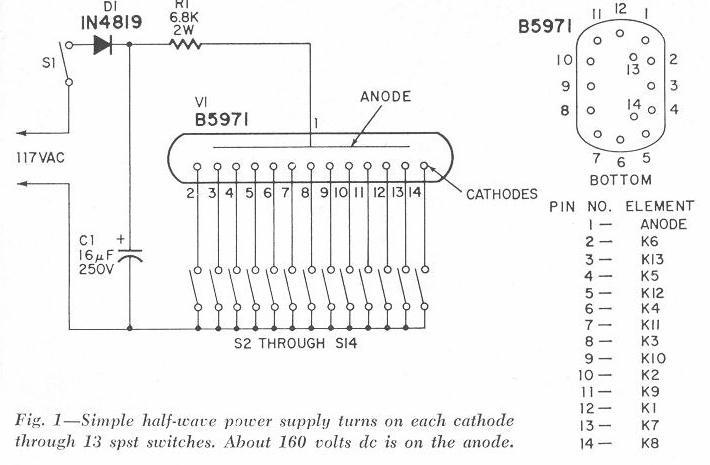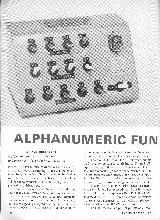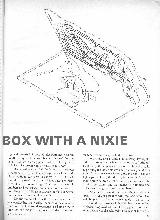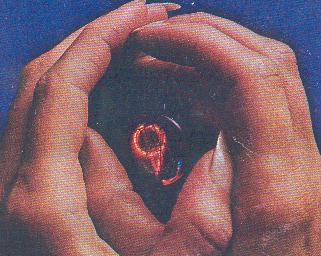
And here are the actual scanned pages. They're pretty big, but I wanted to keep all of the detail. Any suggestions for trimming the size while keeping the small print legible are welcome.
 |
 |
 |
|
|
|
|
 Elfin tubes are a cold-cathode display technology that came
out in the late 1960s. R-E did an article on them in the
August 1969 issue. You can read the article by clicking
here.
Elfin tubes are a cold-cathode display technology that came
out in the late 1960s. R-E did an article on them in the
August 1969 issue. You can read the article by clicking
here.
Apparently Elfins are still available in the same way Nixies are -- you can find them used from various sources. One version I've seen is the Rodan Elfin MG-17F, used in a homebrew clock. Also, the MG-17D was apparently used in a Commodore calculator (the DAC-612).
|
|
|
|
This is a six-digit clock construction project based around
7490 counters and 7441 drivers. The author selected
Burroughs 5750S tubes because he believed they would stand
up having a single digit illuminated for a long period
of time.
The power supply generates 170 volts DC and provides a timing signal from the 60 Hz mains.
The pulse is shaped by Q4 and delivered to the first counter.
I have converted this article into HTML, which you can view here. For the step-by-step construction details you need to look at the last two scans of the actual article. I've also included a color scan of the cover because of the clocks pictured there.
|
|
|
 Radio-Electronics ran an article in the September 1971 issue
about how Nixie tubes actually work. The article has some
interesting information on voltage and current ratings,
ionization time, and two different techniques for dimming.
However, no actual circuit designs or schematics were included.
Radio-Electronics ran an article in the September 1971 issue
about how Nixie tubes actually work. The article has some
interesting information on voltage and current ratings,
ionization time, and two different techniques for dimming.
However, no actual circuit designs or schematics were included.
You can read the article in HTML format by clicking here.
|
Click here to
go to the Nixie Tube page.
Click here to
go to the Wanted page.
Click here to
go to the Main page.
Last revised October 15, 2002